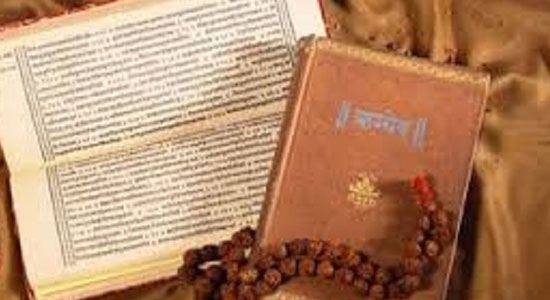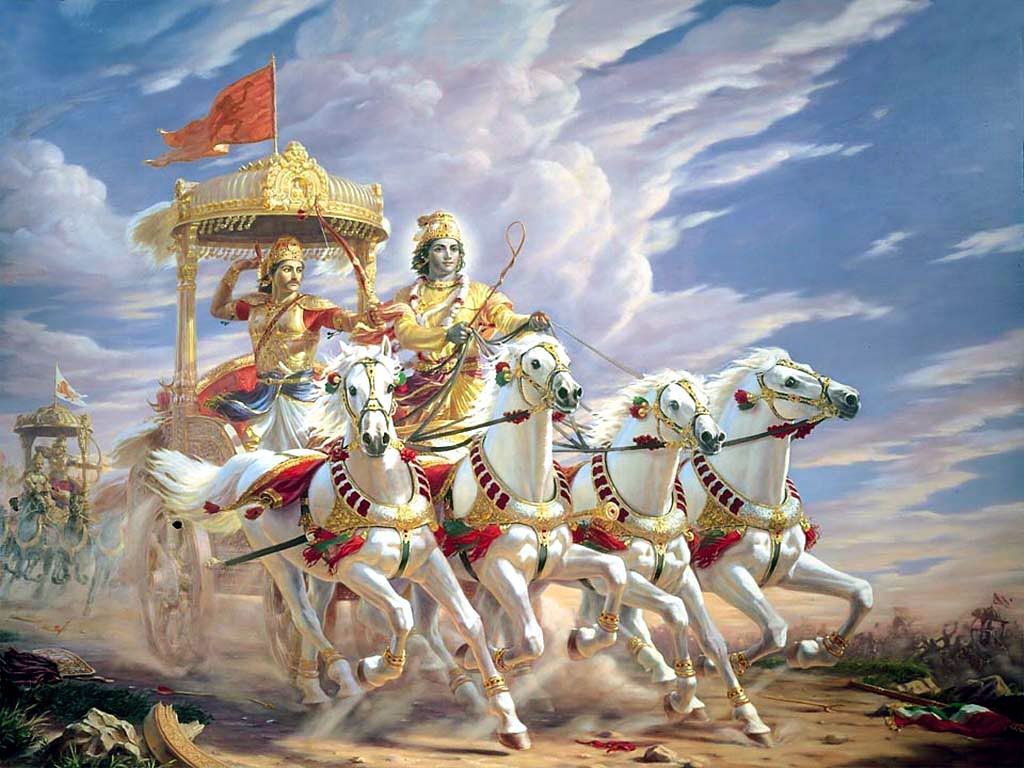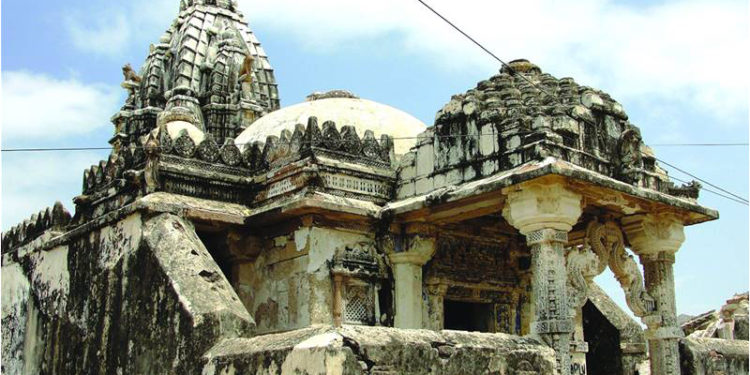
The Veda refers to the Ganges only twice; but it makes as many as thirty references to the Sindhu. Anshnath, the eleventh Jain Tirthankar, was a Sindhi. He died in Bengal.
Excerpts from history articles carried by an Indian website
The Vedas (Rigveda) praises the Sindhu, the cradle of civilization. “Sindhu in might surpasses all the streams that flow…. His roar is lifted up to heaven above the earth; he puts forth endless vigour with a flash of light …. Even as cows with milk rush to their calves, so other rivers roar into the Sindhu. As a warrior-king leads other warriors, so does Sindhu lead other rivers…. Rich in good steeds is Sindhu, rich in gold, nobly fashioned, rich in ample wealth.” In this hymn Sindhu, unlike other rivers, is considered masculine. Other references are, when the Vedic seer invokes heaven and earth, he also invokes the Sindhu. The Veda refers to the Ganges only twice; but it makes as many as thirty references to the Sindhu. This is the Great Sindhu that gave Sindh its name.
In Ramayana Sindh was part of Dasaratha‘s empire. When Kekayi goes into a sulk, Dasaratha tells her: “The sun does not set on my empire. Sindh, Sauvira, Saurashtra, Anga, Vanga, Magadha, Kashi, Koshal — they are all mine. They produce an infinite variety of valuable articles. You can ask whatever you like.” Of course Kekayi wants nothing short of the throne for her son, Bharata. The rest is epic history. When Sita was kidnapped by Ravana, Rama sent the vanaras (monkeys) to look for her, among other places, in Sindh with its “remarkable swimming horses.” Later, when all ended well, Rama gave Sindhu-Sauvira (the Sindh and Multan areas) to Bharata, who duly extended his rule farther north to Gandhara, the home town of Gandhari of Mahabharata fame, which is the modern-day Afghan city Kandahar. His sons founded the cities of Peshawar (Pushkalavati) and Taxila (Takshasila).
 Sindh is also mentioned in the Mahabharata. King Jayadratha of Sindh was married to Kaurava prince Duryodhan’s sister, Dushhala. He was, therefore, all along on the side of the Kauravas and against the Pandavas. However, be it said to the credit of Jayadratha that he, like Dhritarashtra and Bhishma, opposed the disastrous game of dice between the Pandavas and the Kauravas.
Sindh is also mentioned in the Mahabharata. King Jayadratha of Sindh was married to Kaurava prince Duryodhan’s sister, Dushhala. He was, therefore, all along on the side of the Kauravas and against the Pandavas. However, be it said to the credit of Jayadratha that he, like Dhritarashtra and Bhishma, opposed the disastrous game of dice between the Pandavas and the Kauravas.
In the titanic battle of Mahabharata, when Abhimanyu, Subhadra’s son, got killed, Jayadratha “pushed his body with his foot. Arjuna was furious. He vowed to kill “Sindhu-Pati” Jayadratha that very day, before the sun set. Jayadratha wanted to flee the field, but it was too late. He died an inglorious death. Jayadratha’s other love was milk and condensed hot milk (the Sindhi khirni). When announcing his determination to kill Jayadratha, Arjuna said: “Jayadratha is a relation, but he is evil; he has been brought up on kshir and kshirni, but now I’ll cut him to pieces with my arrows.”
In the Bhishma Parva of the Mahabharata, the Sindhu is referred to as the great protector which must be remembered day and night. Obviously the mighty river was a mighty defence line of the country. The Anushasana Parvan of the Mahabharata prescribes bathing in Sindhu River to go to heaven after death, signifying its purity.
 Interestingly enough, the Bhagvad Gita is based on an earlier sermon involving Sindh! Once upon a time, the king of Sindh had defeated young prince Sanjay of Sauvira. Sanjay had lost heart and wanted to forget all about his kingdom. But his brave mother Vidula had shamed him into action. She had told him to remember his ancestry, remember his responsibilities to his people, uphold dharma, and live nobly or die nobly. At a time when the Pandavas were dispirited and did not want to fight, their mother Kunti reminded Krishnaof the story of Vidula and asked him to repeat it to her sons—to move them to action. The result was the immortal sermon of the Gita.
Interestingly enough, the Bhagvad Gita is based on an earlier sermon involving Sindh! Once upon a time, the king of Sindh had defeated young prince Sanjay of Sauvira. Sanjay had lost heart and wanted to forget all about his kingdom. But his brave mother Vidula had shamed him into action. She had told him to remember his ancestry, remember his responsibilities to his people, uphold dharma, and live nobly or die nobly. At a time when the Pandavas were dispirited and did not want to fight, their mother Kunti reminded Krishnaof the story of Vidula and asked him to repeat it to her sons—to move them to action. The result was the immortal sermon of the Gita.
Vedas (Rig Veda), Sindhu says, the cradle of civilization. “Sindhu could overcome everything that the flow …. His roar is lifted into the sky above the earth, pulls out a never-ending enthusiasm like lightning …. Even the milk of cows with their calves to run, so other rivers roar in the Sindhu. As a warrior king lead to other warriors, so do not bring other rivers Sindhu horses …. Full of good is Sindhu, rich in gold, nobly style, and full of great wealth. “In this Sindhu anthem, unlike other rivers, is considered masculine. Other references to the Vedic seer invokes heaven and earth, he also refers to the Sindhu. Veda means the Ganga only twice, but it makes a thirty references to the Sindhu. This is a great Sindhu that gave the name of Sindh.
Kalidasa says in Raghuvamsha on the advice of his maternal uncle Yudhajat, Rama Bharata conferred Sindh. Raghu Rama triumphant horse ancestor had relaxed on the banks of Sindhu. Another poet Sanskrit Bhasa, he created a piece called Avimarka based on the novel of the Prince and Princess of Sindhu-Avimarka Kurangadi Save. The Bhavishya Purana says Shalivahana, the infant son of Maharaja Vikramaditya of Ujjain established in law and order “Sindhusthana” and set its border to the Sindhu.

The Divyavadana (Tibetan version) reports: “The Buddha is in Rajagriha At that time there were two major cities Jambudvipa (North India) and Pataliputra Roruka When Roruka Pataliputra increases decreases increases Pataliputra Roruka fall …” There there was Roruka Sindh rival the capital of Magadha Empire. Since Bimbisara was king of Magadha, he sent Rudrayana king of Sindhu-Save, an unusual portrait of Buddha. The two powerful ministers of Sindh at the time, and Hiroo Bheru their names are still common among the Sindhis. Chandra Gupta Maurya won the first of Sindh and Punjab. It is from this basis that displaced Nanda, Pataliputra occupied and established the Mauryan empire great.
Kashmir Rajatarangini former royal history has many references to Sindh and Sindhis. Kuya Sun Sindhu rose to lead the brigade of elephants and Kashmir was a Queen’s Counsel Didda. High distinction in Kashmir was “Sindhu Gaja” Elephant in Sindh
Sindh was ruled by the dynasty c.489-for Rai Rai 632nd Diwaji (Devaditya) was the greatest ruler of this dynasty, which stands as a great patron of Buddhism, which corresponds to Ashoka in this regard. The capital of his vast empire was Al-MMR. The empire was usurped by later dynasties including the Brahmins unpopularity was a contributing factor to the recent Arab conquest.
Anshnath, the eleventh Jain Tirthankar, was a Sindhi. He died in Bengal. The Jaina Dakshinyachihna (eighth century) speaks of Sindhis as “elegant, with beautiful, soft and slow approach. They are happy songs, music and dance and feel affection for their country. “
 There is a legend that the Great Buddha was honored with a visit of Sindh. Finding the climate extreme, and the area dry and dusty, he had allowed to wear shoes bhikshus here. He also authorized the use of padded clothing, banned elsewhere. Here Sthavirtis, prince or Rorik Roruka (Arora and Alor near modern Rohri) became his disciple. When the Buddha went round his native Kapilavastu in a car, it was reported that “four horses promising Sindhudesha from Lotus colors.” To date, the historic Buddhist stupas found in Sindh. No wonder, when Zulfikar Ali Bhutto was the leader of Pakistan, but he decorated his office with a statue of Buddha.
There is a legend that the Great Buddha was honored with a visit of Sindh. Finding the climate extreme, and the area dry and dusty, he had allowed to wear shoes bhikshus here. He also authorized the use of padded clothing, banned elsewhere. Here Sthavirtis, prince or Rorik Roruka (Arora and Alor near modern Rohri) became his disciple. When the Buddha went round his native Kapilavastu in a car, it was reported that “four horses promising Sindhudesha from Lotus colors.” To date, the historic Buddhist stupas found in Sindh. No wonder, when Zulfikar Ali Bhutto was the leader of Pakistan, but he decorated his office with a statue of Buddha.
_______________
Courtesy: Famous History 4 All